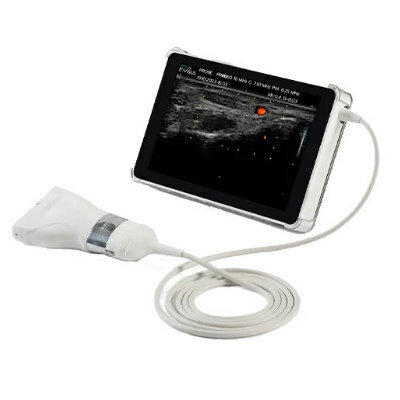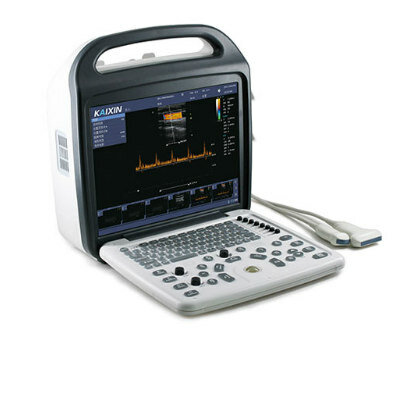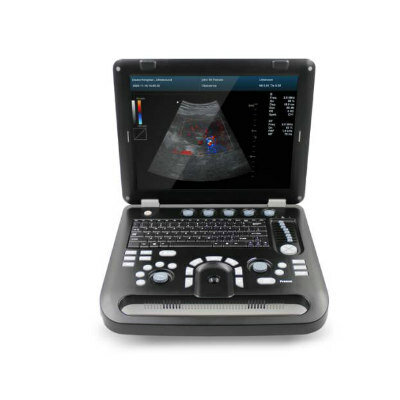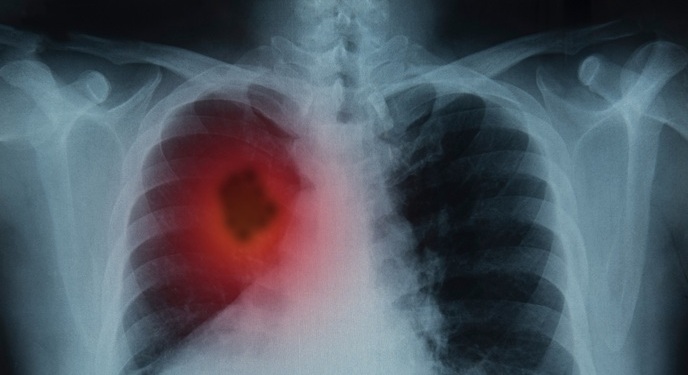Biodegradable Ultrasound Could Make Brain Cancers More Treatable
|
By MedImaging International staff writers Posted on 15 Jun 2023 |

When a person is found to have a malignant brain tumor, the usual treatment is surgical removal followed by chemotherapy to eradicate any remaining cancer cells. However, brain cancers are notoriously resistant to chemotherapy, due to the blood-brain barrier, which is a protective membrane preventing large potentially harmful molecules from entering the brain. This same barrier also blocks beneficial chemo-drugs and other treatments from attacking brain cancer cells and treating other brain diseases. A safe and effective method of breaching the blood-brain barrier involves using ultrasound to vibrate cells sufficiently to create pores that allow the medication to pass through.
However, directing ultrasound through the thick human skull is challenging. Usually, numerous powerful ultrasound devices must be strategically positioned around the skull and accurately focused on the tumor's location with an MRI machine right after administering chemotherapy in a hospital setting. The procedure lasts about five to six hours and the intense ultrasound can damage tissues. The procedure is rarely conducted more than once, despite most patients with aggressive brain cancers undergoing chemotherapy for months. Utilizing ultrasound at each chemotherapy session would be significantly more effective. However, due to the complex nature of the MRI-ultrasound process, this is rarely done. Now, a revolutionary, biodegradable ultrasound, considerably more powerful than earlier models, could improve the treatment of brain cancers.
A device implanted directly in the brain can be used repeatedly to allow chemotherapy to permeate the brain and eliminate tumor cells. An implantable ultrasound device already exists in the market, but it's made of potentially toxic ceramic materials that require surgical removal post-treatment. Researchers at University of Connecticut (Storrs, CT, USA) had earlier built a safe, biodegradable piezoelectric ultrasound brain implant, although it wasn't as powerful as the traditional ceramic variants. In their latest research, the team employed a completely new method to create a biodegradable polymer ultrasound that is as powerful as ceramic models.
Initially, the researchers intended to use glycine crystals, an amino acid that's a common protein in the body and known for its strong piezoelectric properties. Glycine is safe and biodegradable, but it dissolves too quickly in water. Additionally, glycine piezoelectric crystals are brittle and shatter easily, which makes processing this material into a practical ultrasound device highly challenging. The researchers devised a unique solution: they grew glycine crystals, shattered them intentionally into pieces just a few hundred nanometers in size, and then spun them with polycaprolactone (PCL), a biodegradable polymer, to produce piezoelectric films composed of glycine and PCL nanofibers. These films can generate ultrasound at 334 kilo-Pascals under small voltage (~ 0.15 Vrms), similar to a ceramic ultrasound brain implant. They then coated the glycine-PCL film in other biodegradable polymers for protection. Poly-L-Lactide (PLLA), one potential coating, decomposes approximately in six weeks.
The researchers tested the device on mice with brain cancer, treating them with PTX (paclitaxel), a potent chemotherapy drug effective against brain cancer but difficult to pass through the blood-brain barrier. The glycine-PCL ultrasound successfully enabled PTX to cross the blood-brain barrier, reducing the tumors and doubling the lifespan of mice with brain cancer compared to those untreated. The combined treatment of glycine-PCL ultrasound and PTX was much more effective than using PTX alone, or PTX and ultrasound from the original, less powerful version of the biodegradable ultrasound device, based on PLLA. The team also conducted a six-month safety evaluation of the device implanted in the brain and found no negative impact on the health of the mice. The researchers now plan to test the safety and efficacy of the device in large animals.
Related Links:
University of Connecticut
Latest Ultrasound News
- AI Identifies Heart Valve Disease from Common Imaging Test
- Novel Imaging Method Enables Early Diagnosis and Treatment Monitoring of Type 2 Diabetes
- Ultrasound-Based Microscopy Technique to Help Diagnose Small Vessel Diseases
- Smart Ultrasound-Activated Immune Cells Destroy Cancer Cells for Extended Periods
- Tiny Magnetic Robot Takes 3D Scans from Deep Within Body
- High Resolution Ultrasound Speeds Up Prostate Cancer Diagnosis
- World's First Wireless, Handheld, Whole-Body Ultrasound with Single PZT Transducer Makes Imaging More Accessible
- Artificial Intelligence Detects Undiagnosed Liver Disease from Echocardiograms
- Ultrasound Imaging Non-Invasively Tracks Tumor Response to Radiation and Immunotherapy
- AI Improves Detection of Congenital Heart Defects on Routine Prenatal Ultrasounds
- AI Diagnoses Lung Diseases from Ultrasound Videos with 96.57% Accuracy
- New Contrast Agent for Ultrasound Imaging Ensures Affordable and Safer Medical Diagnostics
- Ultrasound-Directed Microbubbles Boost Immune Response Against Tumors
- POC Ultrasound Enhances Early Pregnancy Care and Cuts Emergency Visits
- AI-Based Models Outperform Human Experts at Identifying Ovarian Cancer in Ultrasound Images
- Automated Breast Ultrasound Provides Alternative to Mammography in Low-Resource Settings
Channels
Radiography
view channel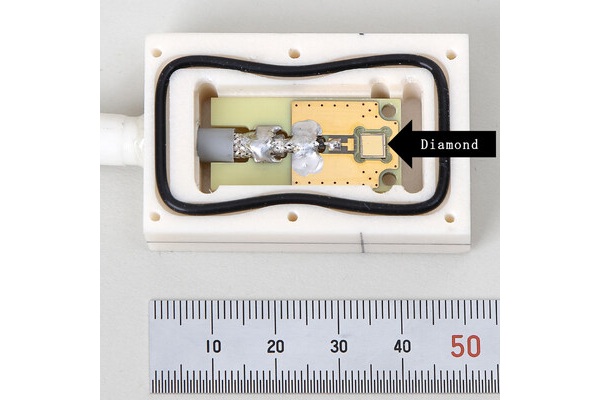
World's Largest Class Single Crystal Diamond Radiation Detector Opens New Possibilities for Diagnostic Imaging
Diamonds possess ideal physical properties for radiation detection, such as exceptional thermal and chemical stability along with a quick response time. Made of carbon with an atomic number of six, diamonds... Read more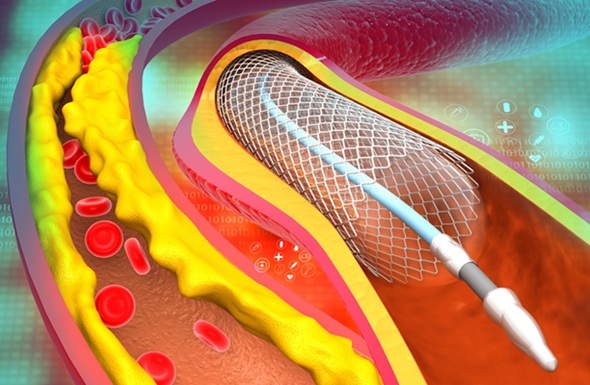
AI-Powered Imaging Technique Shows Promise in Evaluating Patients for PCI
Percutaneous coronary intervention (PCI), also known as coronary angioplasty, is a minimally invasive procedure where small metal tubes called stents are inserted into partially blocked coronary arteries... Read moreMRI
view channel
AI Tool Tracks Effectiveness of Multiple Sclerosis Treatments Using Brain MRI Scans
Multiple sclerosis (MS) is a condition in which the immune system attacks the brain and spinal cord, leading to impairments in movement, sensation, and cognition. Magnetic Resonance Imaging (MRI) markers... Read more
Ultra-Powerful MRI Scans Enable Life-Changing Surgery in Treatment-Resistant Epileptic Patients
Approximately 360,000 individuals in the UK suffer from focal epilepsy, a condition in which seizures spread from one part of the brain. Around a third of these patients experience persistent seizures... Read more
AI-Powered MRI Technology Improves Parkinson’s Diagnoses
Current research shows that the accuracy of diagnosing Parkinson’s disease typically ranges from 55% to 78% within the first five years of assessment. This is partly due to the similarities shared by Parkinson’s... Read more
Biparametric MRI Combined with AI Enhances Detection of Clinically Significant Prostate Cancer
Artificial intelligence (AI) technologies are transforming the way medical images are analyzed, offering unprecedented capabilities in quantitatively extracting features that go beyond traditional visual... Read moreNuclear Medicine
view channel
Novel PET Imaging Approach Offers Never-Before-Seen View of Neuroinflammation
COX-2, an enzyme that plays a key role in brain inflammation, can be significantly upregulated by inflammatory stimuli and neuroexcitation. Researchers suggest that COX-2 density in the brain could serve... Read more
Novel Radiotracer Identifies Biomarker for Triple-Negative Breast Cancer
Triple-negative breast cancer (TNBC), which represents 15-20% of all breast cancer cases, is one of the most aggressive subtypes, with a five-year survival rate of about 40%. Due to its significant heterogeneity... Read moreGeneral/Advanced Imaging
view channel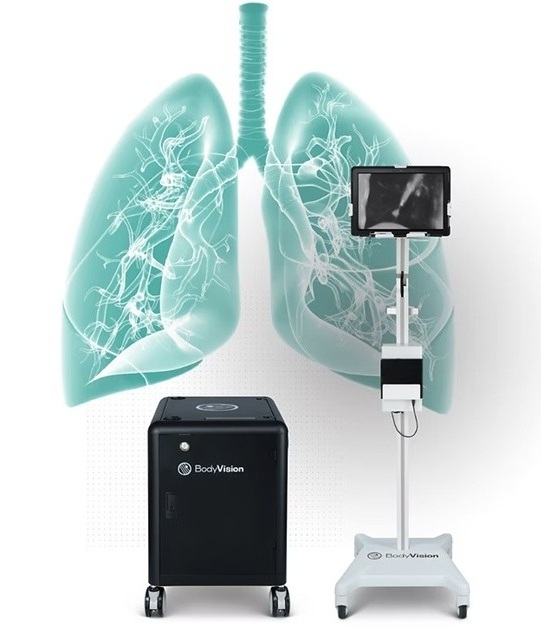
AI-Powered Imaging System Improves Lung Cancer Diagnosis
Given the need to detect lung cancer at earlier stages, there is an increasing need for a definitive diagnostic pathway for patients with suspicious pulmonary nodules. However, obtaining tissue samples... Read more
AI Model Significantly Enhances Low-Dose CT Capabilities
Lung cancer remains one of the most challenging diseases, making early diagnosis vital for effective treatment. Fortunately, advancements in artificial intelligence (AI) are revolutionizing lung cancer... Read moreImaging IT
view channel
New Google Cloud Medical Imaging Suite Makes Imaging Healthcare Data More Accessible
Medical imaging is a critical tool used to diagnose patients, and there are billions of medical images scanned globally each year. Imaging data accounts for about 90% of all healthcare data1 and, until... Read more
Global AI in Medical Diagnostics Market to Be Driven by Demand for Image Recognition in Radiology
The global artificial intelligence (AI) in medical diagnostics market is expanding with early disease detection being one of its key applications and image recognition becoming a compelling consumer proposition... Read moreIndustry News
view channel
GE HealthCare and NVIDIA Collaboration to Reimagine Diagnostic Imaging
GE HealthCare (Chicago, IL, USA) has entered into a collaboration with NVIDIA (Santa Clara, CA, USA), expanding the existing relationship between the two companies to focus on pioneering innovation in... Read more
Patient-Specific 3D-Printed Phantoms Transform CT Imaging
New research has highlighted how anatomically precise, patient-specific 3D-printed phantoms are proving to be scalable, cost-effective, and efficient tools in the development of new CT scan algorithms... Read more
Siemens and Sectra Collaborate on Enhancing Radiology Workflows
Siemens Healthineers (Forchheim, Germany) and Sectra (Linköping, Sweden) have entered into a collaboration aimed at enhancing radiologists' diagnostic capabilities and, in turn, improving patient care... Read more




